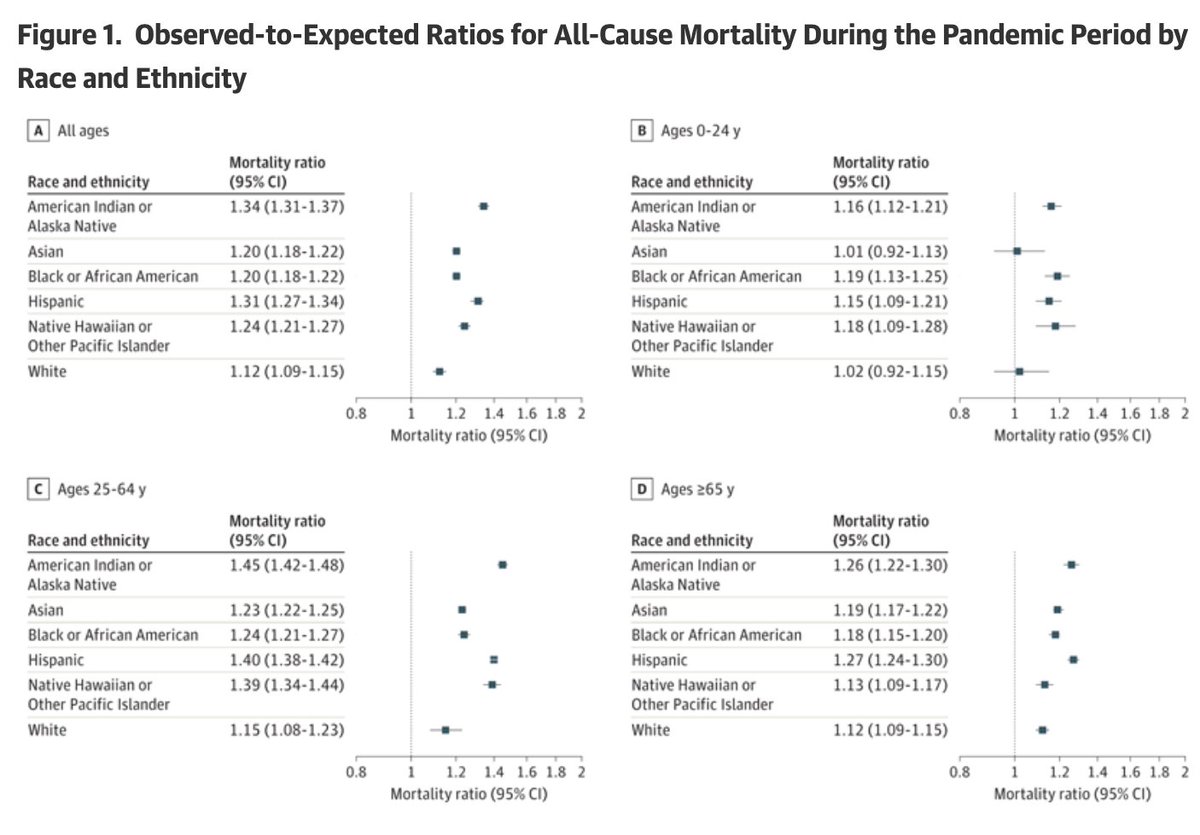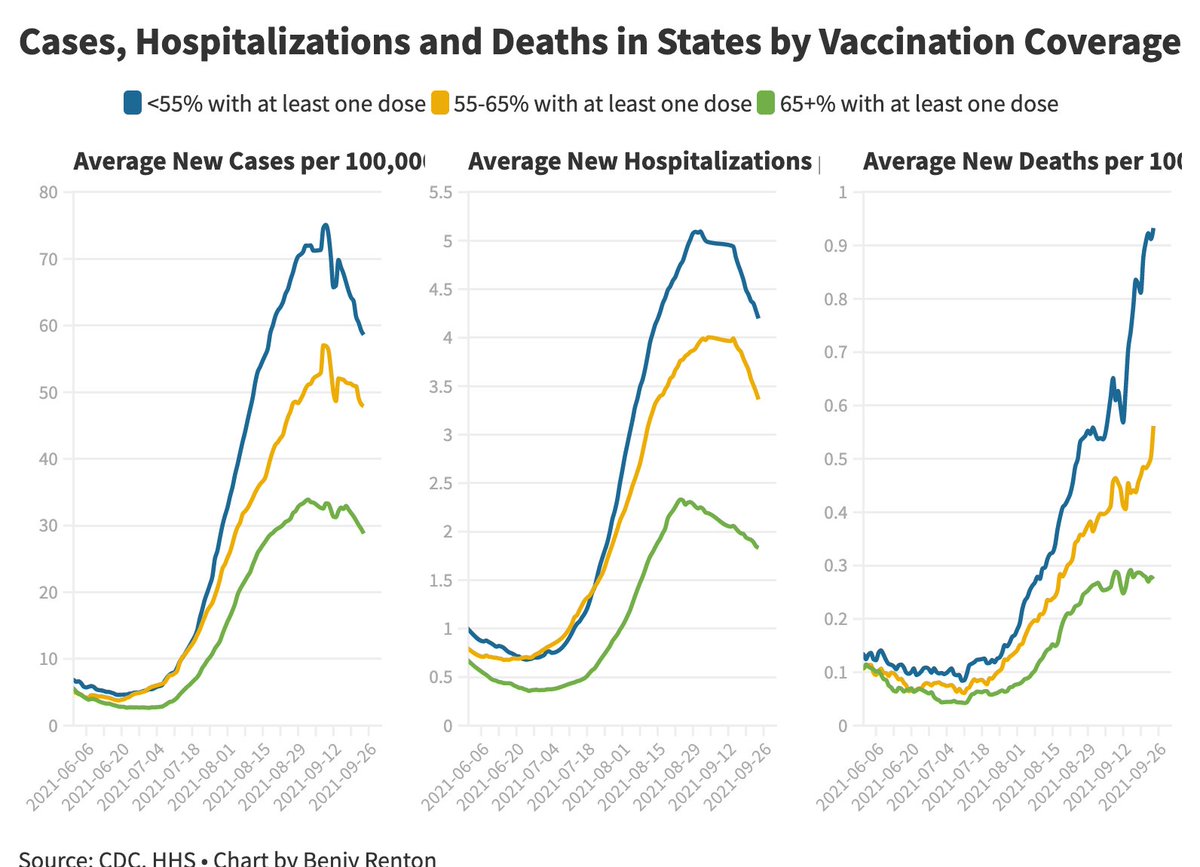
Research Associate at @Brown_SPH. Formerly at @ariadnelabs/@HarvardChanSPH, @VermontDFR and @Middlebury. Views own.
3 subscribers
How to get URL link on X (Twitter) App




 Latest NCHS report says 31.2 million (11.5%) Americans under the age of 65 are uninsured, many of whom are concentrated in Southern states (see map with HHS ASPE data here). Polling from last year showed that many were unaware the vaccine was free.
Latest NCHS report says 31.2 million (11.5%) Americans under the age of 65 are uninsured, many of whom are concentrated in Southern states (see map with HHS ASPE data here). Polling from last year showed that many were unaware the vaccine was free.

 Recent analysis updated yesterday from colleagues at @KFF (@annarouw, @jenkatesdc, @KrutikaAmin and @cynthiaccox) show similar results and layer on COVID-19 community levels.
Recent analysis updated yesterday from colleagues at @KFF (@annarouw, @jenkatesdc, @KrutikaAmin and @cynthiaccox) show similar results and layer on COVID-19 community levels.
 Despite a reasonably strong week the previous week, the pace of new doses being administered is showing signs of slowing (accounting for any possible data lag in recent days). More work on outreach and access is needed to sustain a high vaccination pace.
Despite a reasonably strong week the previous week, the pace of new doses being administered is showing signs of slowing (accounting for any possible data lag in recent days). More work on outreach and access is needed to sustain a high vaccination pace. 


 First, national trends. Cases and hospitalizations continue to decrease but are flattening out (excluding at-home tests). New cases are down to levels not seen since last May — ~26,000 per day.
First, national trends. Cases and hospitalizations continue to decrease but are flattening out (excluding at-home tests). New cases are down to levels not seen since last May — ~26,000 per day. 

 As seen here, after improving trends with the recession of the Omicron surge, more sites have started to see a rise in viral RNA in wastewater. As @BillHanage notes with cases rising in Europe, immunity can determine the effects of severe outcomes.
As seen here, after improving trends with the recession of the Omicron surge, more sites have started to see a rise in viral RNA in wastewater. As @BillHanage notes with cases rising in Europe, immunity can determine the effects of severe outcomes.https://twitter.com/BillHanage/status/1503468190256484353


https://twitter.com/bhrenton/status/1367637310767005696



https://twitter.com/ashishkjha/status/1490373099585515521
 When we look on a county level, we see the power of vaccines to prevent severe outcomes. In counties with lower booster rates, we see death rates almost twice those in counties with higher booster rates, despite essentially parallel case trends.
When we look on a county level, we see the power of vaccines to prevent severe outcomes. In counties with lower booster rates, we see death rates almost twice those in counties with higher booster rates, despite essentially parallel case trends. 




https://twitter.com/ashishkjha/status/1462638592463974406
 Case rises remain concentrated in many northern states, though we must carefully watch viral growth in the Sunbelt. This virus will continue to find unvaccinated communities to infect, and Michigan serves as an example of how infection-induced immunity is not sufficient.
Case rises remain concentrated in many northern states, though we must carefully watch viral growth in the Sunbelt. This virus will continue to find unvaccinated communities to infect, and Michigan serves as an example of how infection-induced immunity is not sufficient. 

https://twitter.com/ashishkjha/status/1457411666296152068
 First, it's important to acknowledge that this was a major week in our fight against COVID-19. From promising news on treatments to kids' vaccinations to 70% of adults being fully vaccinated, there is reason for optimism.
First, it's important to acknowledge that this was a major week in our fight against COVID-19. From promising news on treatments to kids' vaccinations to 70% of adults being fully vaccinated, there is reason for optimism.https://twitter.com/benwakana46/status/1456637419860766725

 While we previously saw spikes in the Upper Midwest, it appears that we are now seeing cases increase in western states such as Arizona and New Mexico.
While we previously saw spikes in the Upper Midwest, it appears that we are now seeing cases increase in western states such as Arizona and New Mexico. 



 On a state level, much of the South has seen the Delta variant already burn through communities. However, Minnesota, Montana and Michigan are among states seeing rising cases.
On a state level, much of the South has seen the Delta variant already burn through communities. However, Minnesota, Montana and Michigan are among states seeing rising cases. 

https://twitter.com/bhrenton/status/1447028859447222274First, let's look on a state level. Our national picture is primarily driven by CA, TX, FL and NY (the largest states), which have all seen cases declining. However, as @ashishkjha notes, the national picture masks local issues, many in Northern states.
https://twitter.com/ashishkjha/status/1447191227590496257


https://twitter.com/ashishkjha/status/1441968897981353984
 While national cases are on the decline, this is mainly due to states with early surges now seeing cases plummet after the Delta variant has run its course. However, these states with lower vaccination rates still have much higher case, hospitalization and death rates.
While national cases are on the decline, this is mainly due to states with early surges now seeing cases plummet after the Delta variant has run its course. However, these states with lower vaccination rates still have much higher case, hospitalization and death rates. 

 Nationally, up to 22.9 million people are eligible as of today — 6.9% of the US' total population. However, that number varies by state — mainly due to some states' early successes in rolling out the vaccine to the most vulnerable groups — 11% in NM compared to 4.8% in GA.
Nationally, up to 22.9 million people are eligible as of today — 6.9% of the US' total population. However, that number varies by state — mainly due to some states' early successes in rolling out the vaccine to the most vulnerable groups — 11% in NM compared to 4.8% in GA. 

https://twitter.com/bhrenton/status/1436054731886112769
